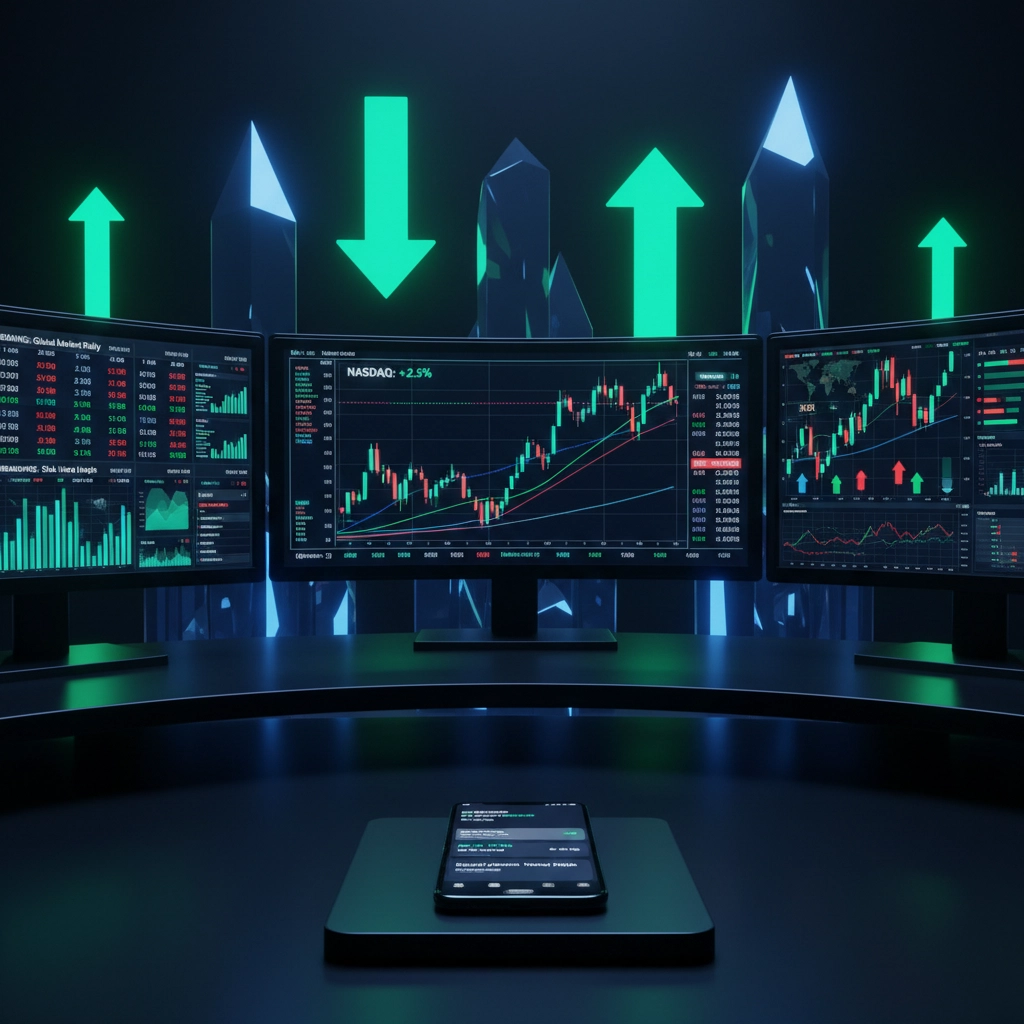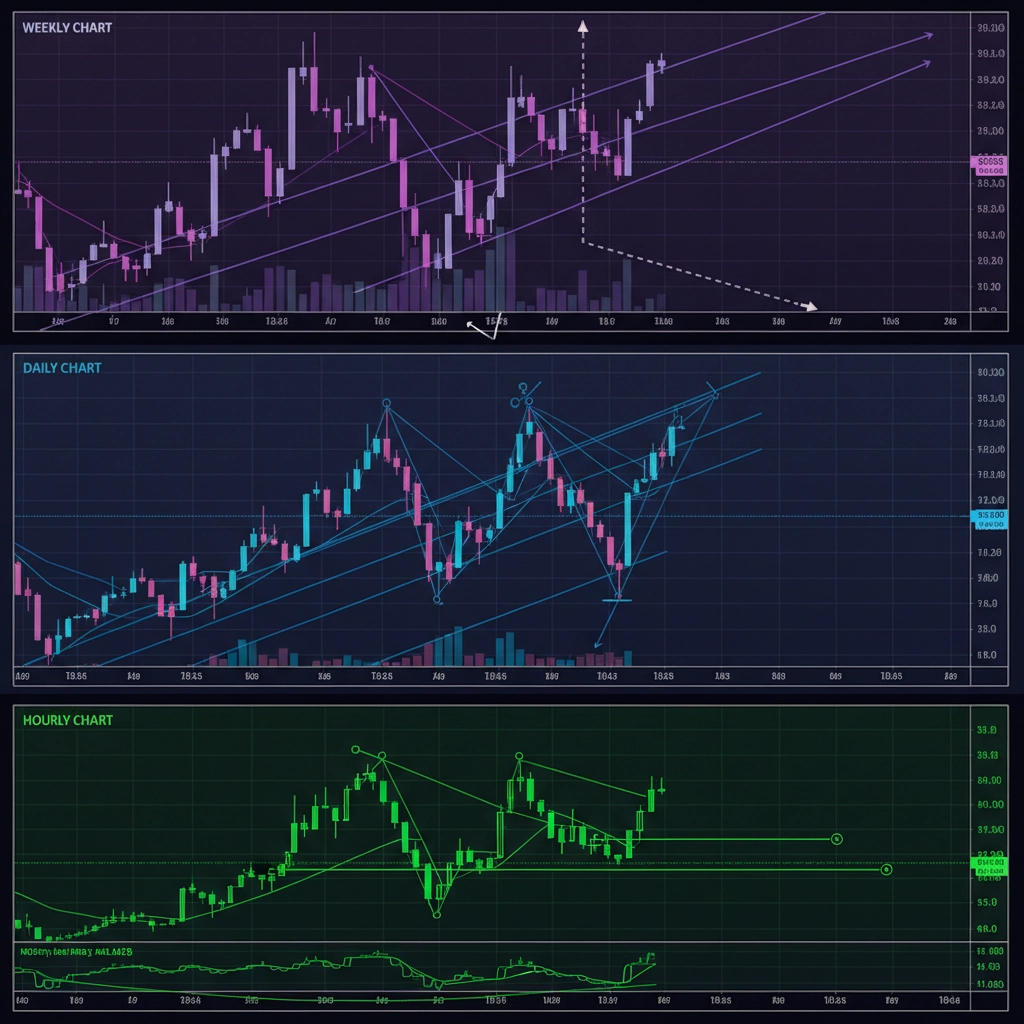The dust has finally settled. After weeks of uncertainty, the government shutdown has been lifted, and markets are responding with their typical mix of relief rallies and volatile swings. If you're a beginner trader watching from the sidelines, you might be wondering: "How do I actually make money from this chaos?"
Here's the thing – policy-driven volatility like government shutdowns create some of the most profitable trading opportunities for those who know what they're looking for. But without proper training, most beginners either freeze up completely or make costly emotional decisions that wipe out their accounts.
That's where professional trading courses and trader coaching make all the difference. Let's explore five battle-tested strategies that seasoned traders use to profit from political volatility – and why learning these through structured trading courses online gives you a massive edge over trying to figure it out alone.
Strategy 1: Master the News Trading Window
When major political events resolve (like a shutdown lifting), markets typically experience three distinct phases: the initial spike, the consolidation, and the trend continuation. Most beginners miss this because they're either too slow to react or they panic-trade without a plan.
The Professional Approach: Set alerts for major political announcements and prepare three potential scenarios before the news breaks. Professional trader courses teach you to map out your entries, exits, and risk levels for each scenario before the volatility hits.
For shutdown resolutions specifically, watch for the "relief rally" in government-dependent stocks like defence contractors and healthcare companies with significant Medicare exposure. These sectors often get hammered during shutdown fears but bounce back aggressively once resolution is confirmed.

Why This Requires Training: News trading isn't about being fast – it's about being prepared. The best trading courses for beginners teach you to create decision trees for different outcomes, so you're never caught off-guard when headlines hit.
Strategy 2: Apply Volatility-Adjusted Position Sizing
Here's what separates professional traders from amateurs: they adjust their position sizes based on market volatility, not their emotions. When policy uncertainty creates elevated volatility (like during shutdown periods), your normal position size could destroy your account if you're wrong.
The Professional Framework: Use the Average True Range (ATR) indicator to measure current volatility against historical norms. When ATR is 50% higher than usual, reduce your position size by 30-40%. When it's double the normal level, cut your positions in half.
During shutdown resolutions, implied volatility often spikes initially then crashes as uncertainty resolves. Professional traders exploit this by selling high-volatility options during the peak fear period, then buying them back as volatility normalises.
"Risk management isn't about avoiding losses – it's about controlling them so your winners can compound," explains Samuel Leach, founder of Samuel & Co Trading. "Most beginners focus on being right. Professionals focus on being profitable."
Why Coaching Matters: This strategy requires discipline that's almost impossible to maintain without external accountability. Trading coach support helps you stick to your sizing rules when your emotions are screaming to go bigger on "sure thing" trades.
Strategy 3: Trade the Sector Rotation Pattern
Government shutdowns create predictable sector rotations that repeat cycle after cycle. During uncertainty, money flows into defensive sectors like utilities and consumer staples. When resolution comes, that money rotates back into cyclical sectors like technology, financials, and industrials.
The Professional Playbook: Track sector relative strength during the shutdown period. Identify which cyclical sectors held up best (these show institutional accumulation). When shutdown resolution is confirmed, these sectors often lead the recovery rally.
For example, during recent shutdown fears, technology stocks with minimal government exposure often outperformed the broader market. Once resolution came, these same stocks led the risk-on rally as institutions deployed cash from defensive positions.

The Execution Edge: Professional trading courses online teach you to use sector ETFs for these rotations rather than individual stocks. This reduces single-stock risk while still capturing the broader rotation theme.
Strategy 4: Exploit Technical Setups Created by Political Fear
Political volatility creates some of the cleanest technical setups you'll ever see. When shutdown fears spike, even fundamentally strong stocks get sold down to key support levels. When resolution comes, these stocks often bounce aggressively from these technical levels.
The Professional Method: During shutdown periods, create watchlists of quality stocks trading near major support levels (200-day moving averages, previous swing lows, or Fibonacci retracements). When political resolution comes, these stocks often provide low-risk, high-reward entry points.
Look for stocks that held their 50-day moving averages during the political uncertainty – these show institutional support and often lead the recovery rally. Avoid stocks that broke below key technical levels, as these may have additional overhead resistance.
Why Structure Matters: Most beginners see a political bounce and jump in randomly. Professional trader courses teach you to wait for specific technical confirmations before entering, dramatically improving your risk-reward ratios.
Strategy 5: Implement the Three-Timeframe Analysis
This is perhaps the most crucial strategy for policy-driven trades, yet it's completely ignored by most beginners. Professional traders analyse three timeframes before entering any political volatility trade: the long-term trend, the medium-term structure, and the short-term entry.
The Complete Framework:
- Weekly charts: Identify the primary trend and major support/resistance levels
- Daily charts: Spot the current market structure and potential reversal zones
- Hourly charts: Time your precise entry after political news breaks
For shutdown resolution trades, this might look like: bullish long-term trend (weekly), oversold bounce setup (daily), and breakout above hourly resistance after positive news.

The Psychological Component: This strategy forces you to zoom out from the headline-driven chaos and maintain perspective on the bigger picture. Professional trading courses near me emphasise this multi-timeframe approach because it prevents emotional decision-making during volatile periods.
Why Professional Trading Education Makes the Difference
Notice how every strategy above requires specific knowledge, preparation, and emotional discipline? This isn't coincidence – it's precisely why trying to trade political volatility without proper education is so dangerous for beginners.
Trader coaching provides three crucial elements that self-taught traders typically lack:
- Systematic Approach: Instead of reacting to headlines, you follow proven frameworks
- Risk Management: You learn position sizing and exit rules before you need them
- Emotional Support: You have accountability when fear and greed try to override your plan
When you're searching for "trading courses near me" or "trading course beginners", you're really looking for someone to teach you how to think like a professional trader, not just hand you a few technical indicators.
The most successful traders understand that markets are ultimately driven by human psychology responding to events like government shutdowns. Professional courses for trading teach you to exploit these predictable psychological patterns rather than become victim to them.
Putting It All Together
Government shutdown resolutions create fantastic trading opportunities, but only for traders who approach them systematically. Whether you're implementing news trading strategies, adjusting position sizes for volatility, or exploiting sector rotations, success comes down to preparation and discipline.
The five strategies outlined above represent just a fraction of what professional traders consider when approaching policy-driven volatility. Each one requires specific skills that are best learned through structured trading courses with experienced mentors who can guide you through real-market applications.
As we move forward from this shutdown resolution, remember that political volatility is a recurring theme in markets. The traders who profit consistently from these events aren't the ones with the fastest news feeds – they're the ones with the best preparation, risk management, and psychological frameworks.
If you're serious about turning political volatility into consistent profits, consider investing in your education through reputable trading courses that focus on risk management and systematic approaches rather than get-rich-quick promises.
The next political event is always around the corner. The question is: will you be prepared to profit from it, or will you be another casualty of emotional trading? The choice – and the education – is yours.






